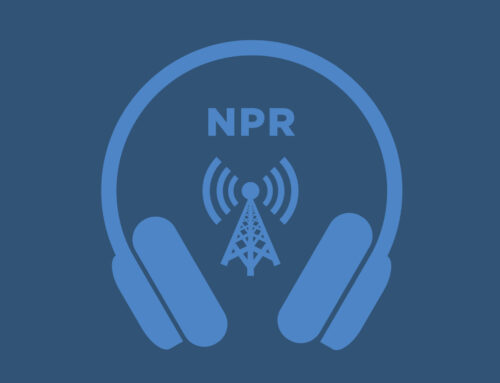Rocket Launches Prompt Environmental Fears on California Coast
October 8, 2025
The southern and central coasts of California meet at a crook in the shoreline. This part of the state is a veritable jewel in terms of biodiversity and productivity. It’s home to the Channel Islands — the Galapagos of North America — and miles of marine sanctuaries.
In the middle of all of this, SpaceX is launching rockets. It wants to launch many, many more. So does the Air Force, and Vandenberg Space Force Base (VSFB), the West Coast’s primary range for rocket and ICBM testing. They plan to launch 100 SpaceX rockets per year in the near future, an average of once every three days.
In 2024, VSFB saw 51 launches, 46 from SpaceX, a rate not seen on the base since 1974.Since the turn of the century, Vandenberg has seen precious few launches. It averaged four a year until 2022.
Citizens and environmental organizations on the south-central coast have objected loudly to each dramatic launch increase. So far, the launches have generated incredible noise and sonic booms, as well as artificial light and trash in the Pacific.
Last month, the California Coastal Commission (CCC), a body tasked with protecting the coast, objected to SpaceX’s launch increases. During the past 12 months, the commission has considered proposals that would increase launches from six to 36, then from 36 to 50. In a staff report, the CCC warned that the cumulative damage to the coast may lead to “adverse impacts to species at a population or habitat scale.”
In 2024, SpaceX said it had “always been committed to public safety and mitigating impacts to the environment” and operates “in collaboration with Space Launch Delta 30” at Vandenberg to monitor protected species. Their joint monitoring has “shown no significant effects to coastal wildlife.” SpaceX did not respond to multiple requests for comment.
SpaceX filed a lawsuit against the CCC last year, claiming the agency was “exceeding its authorized mandate to punish a company for the political views and statements of its largest shareholder and CEO,” Elon Musk. A judge dismissed the case this March.
After a brief, initial phone call with Inkstick, Vandenberg did not respond to multiple requests for comment. Jennifer Green-Lanchoney, chief of Public Affairs for SLD 30, claims the satellites SpaceX flies to low-Earth orbit are necessary for national security.
Joy Downing Riley works for the Ventura chapter of the Surfrider Foundation, a nonprofit dedicated to protecting and preserving oceans and beaches. She told Inkstick she believes the SpaceX launch increase is in direct conflict with the preservation of the biodiversity and ecological integrity of the coast.
SpaceX’s Falcon 9 rockets launch from VSFB, often landing the reusable booster on a barge in the Pacific or back on base. SpaceX plans to introduce Falcon Heavy launches to the region as soon as next year.
On ascent and landing, Falcon 9 rockets generate a sonic boom — a brief but intense bang generated by aircraft breaking the sound barrier. It’s measured in decibels and pounds per square foot (psf) — a sonic boom is both heard and physically felt.
SpaceX uses predictive models based on decades-old weather data to estimate sonic boom impacts. The Air Force only admitted last year that the sonic booms were regularly impacting people within around 100 miles of the base.
CCC noted numerous discrepancies between years of predictions, which “calls into question the accuracy of the models used by the Air Force to evaluate launch effects and whether predictions and assumptions… continue to underestimate sonic boom extent and severity.”
The US Fish and Wildlife Service (USFWS) also expressed concern over sonic boom reporting and its impact on wildlife protection in a report released last month. “Coordination with NASA indicates that the Applicant produced sonic boom modeling may underpredict the impacted region,” it wrote.
Vandenberg’s public affairs chief told Inkstick the Air Force is currently creating new sonic boom modeling tools. Previously, Green-Lanchoney explained, the Air Force used models designed for traditional aircraft, not space launch vehicles.
“We’re dealing with brand new science that no one has ever studied before,” she said. A sonic boom heard on land during a rocket ascent was a “brand new phenomenon” to Vandenberg. NASA studied ascent sonic booms generated by space launch vehicles decades ago. The agency knew then that “since the geometric and operational characteristics of the Space Shuttle differ significantly from supersonic aircraft, estimation of its sonic boom characteristics requires a new technology base.”
On land, sonic booms from fighter jets and space rockets can make animals startle, flee, or incur hearing damage. Repeated stress can radiate through every system in the body.
“Sonic booms are not neutral in a marine environment for wildlife or for public health down the coast,” Downing Riley from Surfrider told Inkstick.
Long before the creation of environmental protections, hundreds of rockets and missiles were launched from Vandenberg. Inkstick has not located any published analysis on the environmental impact from that time. Today, the Space Force, a branch of the Air Force, is “particularly proud of VSFB’s largely undisturbed setting and is a conscientious steward” of the environment, including the 17 federally listed endangered and threatened species on base.
The Coastal Commission identified significant omissions and failures in the Air Force’s environmental analyses. The biological monitoring conducted during launch operations is particularly load-bearing. The CCC said those reports are infrequent and “lack substance and specificity.” The Air Force also “appears to be no longer committing to the enhanced biological monitoring the commission found necessary” for its approval of the base’s increase to 36 launches last year.
Vandenberg has often claimed the impact to animals on the nearly 100,000-acre base is “temporary” and “minor.” There is little accounting for cumulative harm. Sometimes, they discover dead harbor seal pups or damaged eggs from western snowy plovers after a launch. Their reports conclude those deaths can’t be definitively linked to the launches.
But they can’t be definitively unlinked from the launches either, USFWS said.
The Service is aware that SpaceX launches from Vandenberg threaten populations protected under the Endangered Species Act. It has recently learned that launches resulted in disturbances to southern sea otters and caused Western snowy plovers to abandon nesting sites, impacts that are much more significant than what the Air Force had predicted.
At Boca Chica in Texas and Cape Canaveral in Florida, SpaceX launches have also raised concerns among environmental groups.
For Jared Margolis, an attorney with the Center for Biological Diversity (CBD), this is just how SpaceX operates. CBD, along with other environmental groups and the Carrizo/Comecrudo Nation of Texas, sued the FAA for “failing to fully analyze and mitigate the environmental harms resulting from the SpaceX Starship/Super Heavy launch program at Boca Chica.”
SpaceX will do a “bait-and-switch” with the launch cadence, Margolis said. First it’s just a few launches, then they quadruple it. The company undergoes a “very limited process of environmental review,” according to Margolis, to start and applies the base analysis to each launch increase. “They said the impacts will be just the same. That’s not possible,” he said, because more launches mean “more closures, more lighting, more noise, more potential for explosions.”
There have been four consecutive Starship failures at Boca Chica this year. In August, SpaceX had one successful launch. The company calls explosions anomalies. These anomalies have obliterated plover nests and killed sea turtles on nearby Mexican beaches.
SpaceX doesn’t account for these damages, Margolis said, because it simply doesn’t report them. As for the long-range effects of rocket launches, the Air Force and SpaceX don’t appear to consider them at all.
Seventy miles south of Vandenberg, sonic booms have rocked the Carpinteria, California, harbor seal rookery. Susan Mailheau and Becki Norton, two members of the Carpinteria Seal Watch volunteer group, have seen the rookery population nosedive in recent years.
Harbor seals flush — they flee into the water from their haul-outs on shore. Sudden flushing from human disturbances, including sonic booms, is particularly dangerous to pups who can be trampled or abandoned in the chaos.
After a Falcon 9 sonic boom in January, the seals scattered. Norton saw a female seal wet with blood. Repeated disturbances can cause miscarriages and premature births. “They’re far more vulnerable to stress than the average person imagines,” Mailheau said. “This is a sentinel species.” Their health reflects the health of their habitat, and their signals should sound an alarm, according to Mailheau, who said that to think they aren’t harmed is “pure arrogance.”
Mailheau has been a seal watcher for 10 years. Since 2019, the seals at the rookery have plummeted. Historical highs number over 400. Today, she’s grateful for a high count of 120. Where have they gone? Mailheau said we just don’t know.
The vast majority of harbor seals spend their whole lives at their natal site. Leaving goes against a powerful instinct. Some of them are strong enough to make it to the Channel Islands, Mailheau thinks, but the journey is incredibly taxing. “Do they just die?” Mailheau said. “Or do they keep swimming until they can’t swim any longer?”
The Channel Islands and the Santa Barbara channel between them aren’t safe from the sonic booms either. The Air Force consistently reports that rocket noise and sonic booms can’t breach the air to water boundary. This means that underwater animals won’t be affected by the launches and it isn’t obligated to consider wildlife that lives in the Santa Barbara Channel. They have almost exclusively cited one single paper to support this claim.
The author of the paper, Oleg Godin, told Inkstick that his paper doesn’t support the Air Force’s point at all. Godin is a physicist who specializes in acoustics. He said that the specific article doesn’t have anything to do with air-water transference; it just doesn’t relate. But besides, he added, “underwater recordings of a sonic boom due to supersonic aircraft have been documented.”
“First stages of space rockets are among the loudest man-made sound sources,” he explained. “I would not be surprised if SpaceX launches produced a distinctive and perhaps strong underwater noise.”
A report produced for the FAA in 1999 considered commercial launch vehicles, finding that “because launches occur over water, sonic boom propagation must also be considered as a potential noise impact from [launch vehicles].” Sonic boom noise underwater caused by a launch vehicle “penetrates further and is more intense” than aircraft booms, the report added.
Though sound can be attenuated when it moves from the air through the ocean, rocket launches are among the loudest man-made noise sources. “Sonic boom impacts are expected to be more severe in relatively shallow coastal water as compared to the open sea,” the FAA report read. Examining the Apollo 17 launch, the report’s authors concluded that rocket sonic booms “may represent a threat of physical and physiological impairment to marine mammals” near the water surface. “In this impact zone, sonic boom shock strengths may reach 4 to 8 psf.”
More recently, a 2016 paper in the Chinese Physics B journal examined research on air-to-water sound transmission and found that aircraft noise can have a harmful impact on cetaceans such as dolphins and whales by causing “direct physiological damage, threshold shifts, masking, and disruption of normal behavior.”
Downing Riley is concerned for underwater mammals in the Southern Bight. Southern orcas, humpback whales, blue whales, and dolphins transit the channel. “Many marine species rely on echolocation to communicate,” she said. “Disrupted patterns from sonic booms are not studied well enough in the SB channel.”
Peggy Oki, an environmental activist, legendary skateboarder, and founder of the Origami Whales Project, worries about the animals in the Santa Barbara Channel that go unnoticed.
All marine mammals have to spend time on the surface of the water, she said. When SpaceX boosters land on base or on a small barge in the Pacific Ocean, the sonic boom is often even stronger than the one generated on ascent. Where does that energy go?
When Oki hears that Vandenberg’s environmental impact statement says there’s no noise transfer from air to water, she laughs. For VSFB, that’s typical. “The CCC followed the law and they denied the Air Force,” Oki said. It objected last year, and the launches still happened. “The Air Force can do anything it wants because it’s the military.”
Search
RECENT PRESS RELEASES
Related Post




